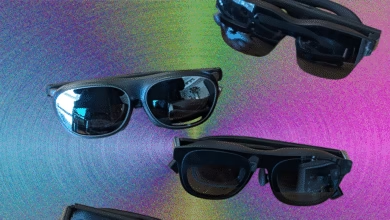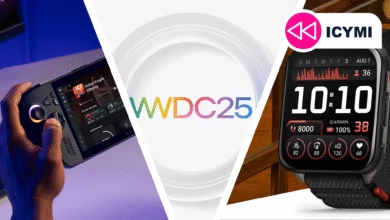Apple’s Liquid Glass Tech Could Revolutionize AR Glasses

▼ Summary
– Apple announced Liquid Glass at WWDC 2025, a major software design overhaul potentially hinting at upcoming AR glasses.
– Liquid Glass features transparent, reflective window panes, offering a sleek look but still has opacity issues in its beta stage.
– The Vision Pro’s UX design reduces disorientation by overlaying windows on real-world surroundings, though its high price limited commercial success.
– Apple’s rumored AR glasses may include cameras, microphones, and Siri for tasks like calls, translation, and notifications, competing with Meta and Google.
– Liquid Glass’s transparent design elements could help AR notifications blend into surroundings, avoiding visual obstruction for users.
Apple’s groundbreaking Liquid Glass technology could redefine augmented reality experiences through its upcoming AR glasses. Revealed at WWDC 2025, this innovative interface design offers transparent, reflective window panes that hint at the company’s next-generation wearable ambitions. The visual language closely mirrors Apple’s Vision Pro headset, suggesting a seamless transition between devices.
The Liquid Glass concept transforms smartphone screens into dynamic panes that balance opacity with real-world visibility, an approach that could solve critical challenges for AR wearables. While still in beta, the technology demonstrates Apple’s commitment to creating interfaces that feel natural rather than intrusive. This philosophy aligns perfectly with augmented reality, where digital elements must coexist harmoniously with physical environments.
Apple’s Vision Pro headset, despite its premium $3,500 price tag, showcased the company’s ability to minimize the disorientation often associated with extended VR use. By blending virtual windows with real-world surroundings instead of artificial backdrops, Apple created a more intuitive mixed-reality experience. This foundational work likely informs their AR glasses development, where comfort and usability will be paramount.
Industry analysts speculate the glasses will incorporate cameras, microphones, and speakers while integrating Siri for hands-free control. Features like live translation, navigation prompts, and subtle notification displays could position Apple as a serious competitor against Meta and Google’s smart glasses. The key differentiator? Apple’s signature design elegance, something its rivals have struggled to match consistently.
Transparency will be crucial for mainstream AR adoption. Unlike VR headsets that fully immerse users, AR glasses must overlay information without disrupting real-world awareness. Liquid Glass’s ability to make digital elements appear as natural reflections rather than obstructive alerts could set a new standard for wearable interfaces.
While official details remain scarce, the connection between Liquid Glass and Apple’s AR ambitions seems inevitable. If executed well, this technology might finally deliver the seamless augmented reality experience that tech enthusiasts have anticipated for years. The real test will be whether Apple can package these innovations into a consumer-friendly product that justifies its inevitable premium pricing.
(Source: TechCrunch)




